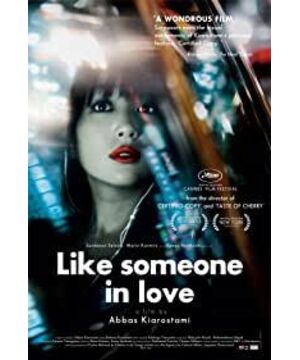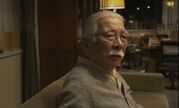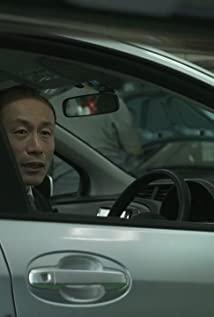"Like a River in Love" is Abbas's only film work in Japan, using a Japanese cast to tell a Japanese localized story. In this film, Abbas still displays his keen intuition as an artist while delivering the cinematic narrative, using sound creatively to make the entire film evocative.
The sound design of this place comes from 30 minutes into the beginning of the film, when Akiko, a assisted dating student played by Takanashi Rin, enters the house of an old professor played by Okuno Hiro. In such a closed family environment, Abbas first amplified the ambient sound outside the window, and the sound of cars passing on the highway "invaded" the professor's home. Then the professor and Akiko began to talk, but the ambient sound was amplified again, and more and more noises began to appear, and it was impossible to distinguish how many kinds of voices there were. These sounds like collected from a noisy market accompanied the two of them. dialogue. Of course, the voice of the two people's dialogue has always dominated the main body, and this "inexplicable" ambient sound will even ignore its existence if you don't listen carefully. But once the audience starts to pay attention to the ambient sound, they will no longer pay attention to the dialogue of the characters, but will start to be puzzled or interesting to distinguish the ambient sound.
Abbas has never spoken publicly about his design or conception of the insertion of this voice, but no one seems to ask the question. But this is an important entry point for "Like a River in Love" or Abbas's film research.
I believe that many audiences who notice the sound of this paragraph will subconsciously think that there is a problem with the post-production of the film, and this sound only appears here in this film, and Abbas does not seem to have used this method before. , so this is obviously normal to be ignored. But this treatment is just a variation of the cinematic reflexivity Abbas often uses.
IRA JAFFE analyzed Abbas's work "Cherry's" in "Death-Drive, Life-Drive A Talking Picture, Taste of Cherry, Five Dedicated to Ozu and Still Life" in "Slow Movies: Countering the Cinema of Action" "Taste": Perez believes that as early as the 1970s, Abbas's films for the Iranian Center for Children's Intelligence and Development showed the director's tendency to "exposed his camera", "like a teacher explaining to children how things are done. The way they work has attracted the attention of the media.” Perhaps to reconcile with modernism... In slow films, reflexes like these twelve shots (at the end of the film) are uncommon, and their presence may surprise and alienate the audience, although these shots do not Without making the movie more complicated. The main reason is that Abbas's tendency to "exposed the camera" only appears at the end of the film, rather than interrupting the action of the characters in the main film. So The Taste of Cherry can be considered an unfinished movie.
IRA JAFFE also cites the example of Lisandro Alonso in this article: In "Liverpool," Lisandro Alonso sees reflex as the still camera in the space given up by the main character stay. Dennis and Joan West describe the above stop (or stop time) this way: Farrel (note: character in "Liverpool") has left his cramped cabin compartment while we have a few seconds left to simply stare with this environment. (Note: The camera still holds about 5 seconds after the character opens the door and walks out.) Another example is when Farrel leaves his mother's village, the camera still stays in this empty room for 29 seconds. Alonso went on to add that in such a "pause" "the audience becomes aware of the language of the film, because he is asked to notice the presence of the cinematic camera, he will also notice the presence of the director, and at the same time he will understand that in the fictional Someone outside the plot is telling a story to him.
This method of relying on the camera to stay is not uncommon, and Cai Mingliang and others also use it frequently. However, we can argue that Abbas was the first of this group of film directors to try to reflex the film in terms of sound. Stigler pointed out in the article "The Time of the Movie": Fundamentally speaking, the domination of the film narrative over the audience stems from the most ancient story desire. As mentioned above, Abbas believes that his films need the audience to do it, so this way of dealing with the sound frees the audience from the domination of the narrative, from the desire to hear the story and the dialogue of the characters in the film, so that the To recognize this unfinished work in front of me, and to complete it.
That is to say, Abbas is no longer satisfied with "exposing the camera", he also exposed the post-production process of the film. This kind of covert handling of course also verifies again IRA JAFFE's judgment on Abbas's film reflexivity. Abbas's reflexivity is a kind of partial, which is more gentle than Godard's.
View more about Like Someone in Love reviews











